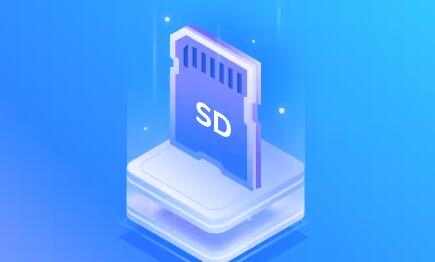Recovering deleted files from an SD card without using software can be challenging, but it is possible through a few manual methods.
SD Card File Deletion
When you delete a file from an SD card, the data isn’t immediately erased. Instead, the space it occupied is marked as available for new data. If new files are saved to the card before recovery, the chances of successfully retrieving the deleted files diminish significantly.
Precautions Before Attempting Recovery
Stop Using the SD Card: Immediately stop using the SD card to prevent overwriting the deleted files.
Make a Backup: If the card is still functioning, make a complete backup of any recoverable data.
Use Read-Only Devices: If possible, use a card reader connected to a computer that won’t write to the SD card.

Manual Methods for Recovery
1. Check the Recycle Bin (for Windows users)
If you’ve recently deleted files on your SD card while it was connected to a Windows computer, they might be in the Recycle Bin. To check:
Connect the SD card to your computer.
Open the Recycle Bin by double-clicking its icon on the desktop.
Look for your deleted files. If found, right-click and select “Restore.”
2. Inspect Other Devices
Sometimes, files deleted from an SD card might still exist on other devices (cameras, phones, etc.) where the card was previously used. Check:
Cameras: Many cameras store images in their internal memory. Check if the images were saved there.
Smartphones: If the SD card was used in a smartphone, check the device’s gallery or file manager apps.
3. Use Command Prompt (Windows)
If the SD card has become corrupted or the files seem missing, you can use the Command Prompt to attempt a recovery:
Connect the SD card to your computer.
Press Win + R to open the Run dialog box. Type cmd and hit Enter to open Command Prompt.
In Command Prompt, type chkdsk X: /f, replacing X with the drive letter of your SD card. This command checks for file system errors and attempts to fix them.
After running the command, check the SD card for restored files.
4. Access Previous Versions (for Windows users)
If you’ve enabled file history or system restore points, you might be able to retrieve previous versions of files:
Right-click on the SD card in File Explorer.
Select “Properties.”
Navigate to the “Previous Versions” tab.
If there are any available versions, select one and click “Restore.”
5. Explore Manual File Recovery Techniques
For users with some technical know-how, there are a few manual techniques to explore:
File System Navigation: You can navigate the SD card’s file structure using a command line interface to see if files are still present but marked as deleted. Use commands like dir /a to show hidden files and directories.
Hex Editor: Advanced users can use a hex editor to inspect the raw data on the SD card. This method is quite complex and requires a good understanding of file systems and data structures.
Avoiding Future Data Loss
Regular Backups: Regularly back up important files from your SD card to a computer or cloud storage.
Use Quality SD Cards: Invest in high-quality SD cards from reputable manufacturers to reduce the risk of data corruption.
Eject Properly: Always eject the SD card properly from devices to prevent file system corruption.
Keep the Card Dry: Avoid exposing the SD card to moisture or extreme temperatures, which can cause physical damage.
Recovering deleted files from an SD card without software is possible, but the success rate can vary based on several factors, including the type of deletion, the SD card’s usage after deletion, and the specific methods employed. While manual recovery methods may work in certain situations, they require careful execution and a bit of technical knowledge.
For the best chances of recovery, always consider using professional data recovery software or services, especially if the data is irreplaceable. Implementing preventive measures can also help avoid future data loss, making your digital life much more secure.
About us and this blog
Panda Assistant is built on the latest data recovery algorithms, ensuring that no file is too damaged, too lost, or too corrupted to be recovered.
Request a free quote
We believe that data recovery shouldn’t be a daunting task. That’s why we’ve designed Panda Assistant to be as easy to use as it is powerful. With a few clicks, you can initiate a scan, preview recoverable files, and restore your data all within a matter of minutes.
Subscribe to our newsletter!
More from our blog
See all postsRecent Posts
- Data recovery salt lake city utah 2025-04-18
- Data recovery sacramento 2025-04-18
- Data recovery miami 2025-04-18

 Try lt Free
Try lt Free Recovery success rate of up to
Recovery success rate of up to









